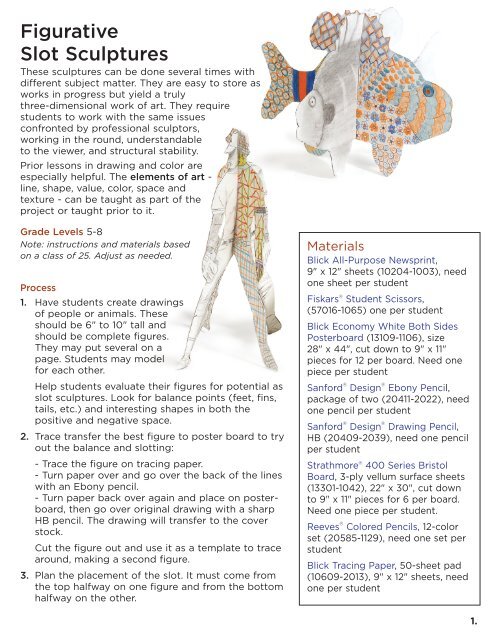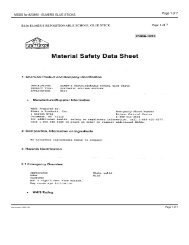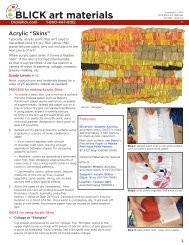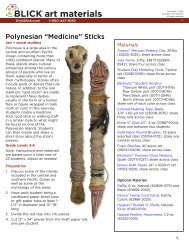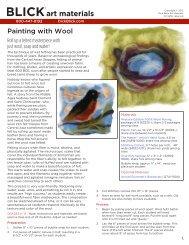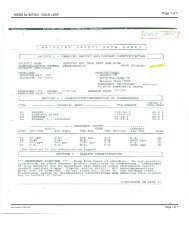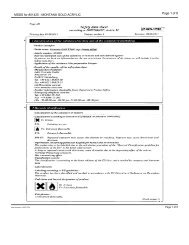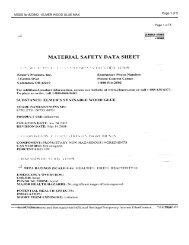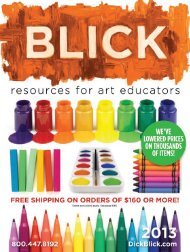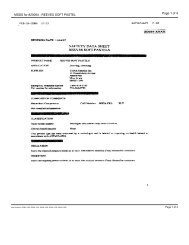Figurative Slot Sculptures - Dick Blick - Dick Blick Art Materials
Figurative Slot Sculptures - Dick Blick - Dick Blick Art Materials
Figurative Slot Sculptures - Dick Blick - Dick Blick Art Materials
You also want an ePaper? Increase the reach of your titles
YUMPU automatically turns print PDFs into web optimized ePapers that Google loves.
<strong>Figurative</strong><br />
<strong>Slot</strong> <strong>Sculptures</strong><br />
These sculptures can be done several times with<br />
different subject matter. They are easy to store as<br />
works in progress but yield a truly<br />
three-dimensional work of art. They require<br />
students to work with the same issues<br />
confronted by professional sculptors,<br />
working in the round, understandable<br />
to the viewer, and structural stability.<br />
Prior lessons in drawing and color are<br />
especially helpful. The elements of art -<br />
line, shape, value, color, space and<br />
texture - can be taught as part of the<br />
project or taught prior to it.<br />
Grade Levels 5-8<br />
Note: instructions and materials based<br />
on a class of 25. Adjust as needed.<br />
Process<br />
1. Have students create drawings<br />
of people or animals. These<br />
should be 6" to 10" tall and<br />
should be complete figures.<br />
They may put several on a<br />
page. Students may model<br />
for each other.<br />
Help students evaluate their figures for potential as<br />
slot sculptures. Look for balance points (feet, fins,<br />
tails, etc.) and interesting shapes in both the<br />
positive and negative space.<br />
2. Trace transfer the best figure to poster board to try<br />
out the balance and slotting:<br />
- Trace the figure on tracing paper.<br />
- Turn paper over and go over the back of the lines<br />
with an Ebony pencil.<br />
- Turn paper back over again and place on posterboard,<br />
then go over original drawing with a sharp<br />
HB pencil. The drawing will transfer to the cover<br />
stock.<br />
Cut the figure out and use it as a template to trace<br />
around, making a second figure.<br />
3. Plan the placement of the slot. It must come from<br />
the top halfway on one figure and from the bottom<br />
halfway on the other.<br />
<strong>Materials</strong><br />
<strong>Blick</strong> All-Purpose Newsprint,<br />
9" x 12" sheets (10204-1003), need<br />
one sheet per student<br />
Fiskars ® Student Scissors,<br />
(57016-1065) one per student<br />
<strong>Blick</strong> Economy White Both Sides<br />
Posterboard (13109-1106), size<br />
28" x 44", cut down to 9" x 11"<br />
pieces for 12 per board. Need one<br />
piece per student<br />
Sanford ® Design ® Ebony Pencil,<br />
package of two (20411-2022), need<br />
one pencil per student<br />
Sanford ® Design ® Drawing Pencil,<br />
HB (20409-2039), need one pencil<br />
per student<br />
Strathmore ® 400 Series Bristol<br />
Board, 3-ply vellum surface sheets<br />
(13301-1042), 22" x 30", cut down<br />
to 9" x 11" pieces for 6 per board.<br />
Need one piece per student.<br />
Reeves ® Colored Pencils, 12-color<br />
set (20585-1129), need one set per<br />
student<br />
<strong>Blick</strong> Tracing Paper, 50-sheet pad<br />
(10609-2013), 9" x 12" sheets, need<br />
one per student<br />
1.
Process, continued<br />
4. Put the figure together. Stand it up and<br />
evaluate it for visual interest and<br />
structural stability. Make any necessary<br />
changes.<br />
5. When the figure is successful, repeat step<br />
two and trace transfer two figures to the<br />
3-ply bristol board.<br />
6. In working with the figures, two of the<br />
elements of art - shape and space - have<br />
already been created by the figure. Now<br />
students use pencils and colored pencils<br />
to add the other four elements (value,<br />
texture, line and color).<br />
Side one is completed in contour line<br />
with the HB pencil. All linear aspects of<br />
the subject and gray values should be<br />
explored.<br />
Side two is completed with the colored<br />
pencils, adding texture with repetative<br />
patterns.<br />
National Standards<br />
Content Standard #1 — Understanding and applying<br />
media, techniques, and processes<br />
5-8 Students select media, techniques, and processes;<br />
analyze what makes them effective or not effective in<br />
communicating ideas; and reflect upon the effectiveness<br />
of their choices<br />
Content Standard #2 — Using knowledge of structures<br />
and functions<br />
5-8 Students generalize about the effects of visual<br />
structures and functions and reflect upon these effects<br />
in their own work<br />
Content Standard #3 — Choosing and evaluating a<br />
range of subject matter, symbols, and ideas<br />
5-8 Students integrate visual, spatial, and temporal<br />
concepts with content to communicate intended<br />
meaning in their artworks<br />
Lesson Plan and <strong>Art</strong>work submitted by<br />
Sallye Mahan-Cox, Alexandria, VA<br />
Copyright © 2004 <strong>Dick</strong> <strong>Blick</strong> <strong>Art</strong> <strong>Materials</strong>. All rights reserved.<br />
2.


